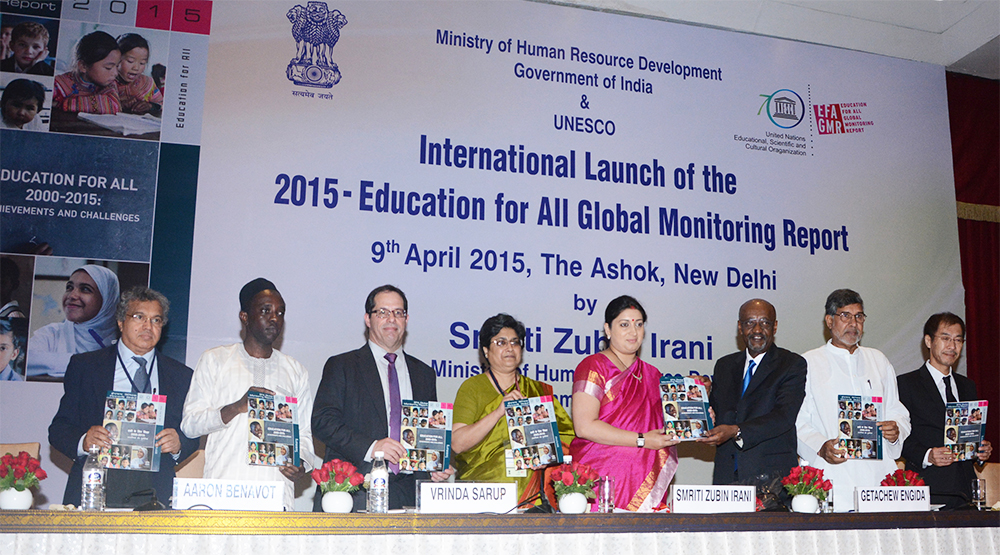12th Education For All Global Monitoring Report” - Report Card On Global Education For Past 15 Years Launched In New Delhi
Submitted by admin on Thu, 2015-04-09 18:31
The 12th Global Monitoring Report (GMR) “Education for All 2000-2015: Achievements and Challenges” launched in New Delhi, India provides a comprehensive assessment of the progress made since 2000 towards the achievement of the Education For All (EFA) goals agreed upon in the Dakar Framework.
|
Six EFA Goals: Taking Stock of Progress & Achievements Goal 1. Expand early childhood care and education, especially for the most vulnerable children. Goal 2. Achieve universal primary education, particularly for girls, ethnic minorities and marginalized children. Goal 3. Ensure equal access to learning and life skills for youth and adults. Goal 4. Achieving a 50 per cent reduction in levels of adult illiteracy by 2015. Goal 5. Achieve gender parity and equality Goal 6. Improve the quality of education and ensure measurable learning outcomes for all |
Education, needless to say, is one of the most powerful tools for transforming human lives, nations, society and world at large. Global March, since its inception in 1998 has worked towards the rights of children to receive free and meaningful education. Through its model of Triangular Paradigm, Global March clearly establishes that child labour, poverty and illiteracy are inter-connected global goals and thus the need for a unified response for the achievement of these goals. With the world now shifting its attention to the World Education Forum in Incheon, Korea in May and subsequently the adoption of the post 2015 development agenda in September, it becomes binding on policy makers, civil society and the international community alike to focus on ‘quality education’ and the inclusion, especially of the ‘hardest-to-reach’ children in the discourse on education.

Speaking at the launch of the EFA GMR, Nobel Peace Laureate, Kailash Satyarthi said, “When one door of a classroom opens for a child, a million doors of opportunities open up. There is no other powerful tool than education to break the shackles of mental and social slavery. Education is the pre-requisite for social and economic justice, sustainable societies and effective democracy. There is no source of light as bright as education”. He also emphasised on the importance of a strong political will, sufficient budgetary allocation for education, proactive civil society and a sensitised and engaged community for ensuring that no child remains bereft of education.
With the 2015 EFA goals coming to an end, it is vital that the post- 2015 education goals are clearly defined, robust, realistic and well resourced. It is important that the children left behind in 2015 are prioritised in the post-2015 education goals. While we must applaud the progress made in the last fifteen years, let us not ignore the 57 million children who still remain out-of-school. Without doubt, the only way to secure a brighter future is a renewed commitment to quality, inclusive and equitable education.
For more information on EFA GMR click here



